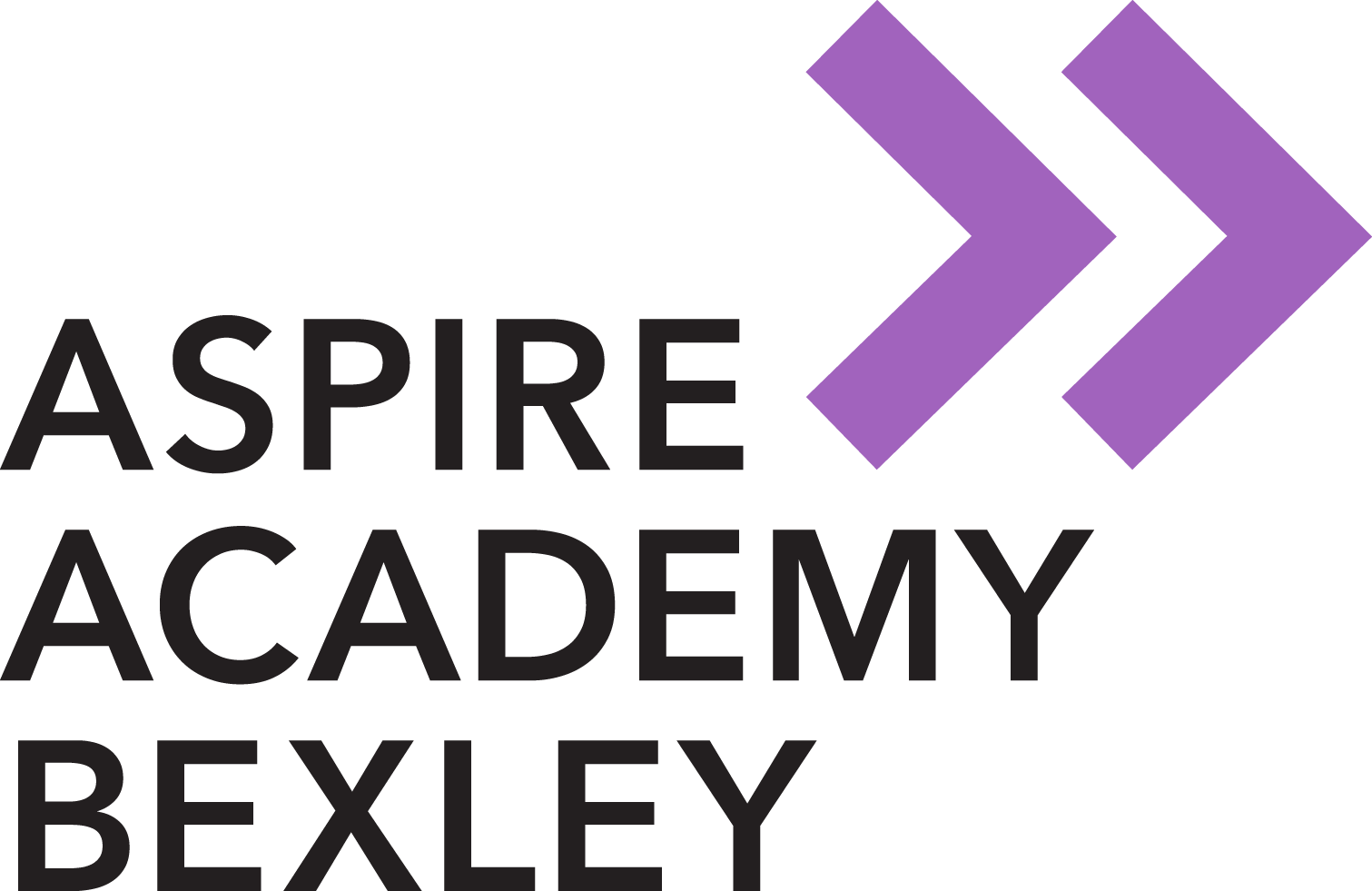Phonics at Aspire
At Aspire Academy Bexley, children start to learn to read and write using Read Write Inc. phonics, a systematic synthetic phonics scheme. They begin the scheme as soon as they join us and carry on until they have moved through the entire programme. We re-assess pupils every half term to ensure they are in the correct phonics group for their ability.
Once pupils have completed the phonics scheme, they progress onto the Read Write inc. Literacy and Language Scheme. Literacy and language is a complete literacy programme which is closely linked to the national curriculum. It develops children’s comprehension, vocabulary, writing, critical thinking and discussion skills, and grammar. Children learn what it is to be a real reader and to truly engage in the world of books.
Children have a one hour English lesson at least 4 times a week. This is their first lesson of the day. On a Tuesday, they have a Library lesson, where they develop a love of reading with the support of their teachers.
Below is a quick guide for parents/carers with some tips and ideas to help you support your child with their phonics. You can also find more information at :
https://home.oxfordowl.co.uk/reading/reading-schemes-oxford-levels/read-write-inc-phonics-guide/
Set 1 Sounds
All children start by being taught these sounds but it takes lots of practice to learn them, so you can use these ideas every day or as often as you can.
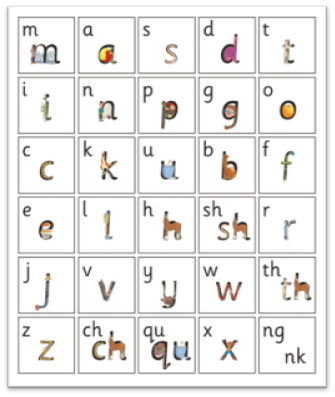
Here is a video showing you all the Set 1 sounds (watch up until 1 minute 15 seconds). Practice along with the video and then use this sound book or the Set 1 Speed Sounds slideshow to practise reading them speedily.
Set 2 Sounds
Once children are confident with all Set 1 sounds, they will progress on to Set 2 Sounds. If your child is learning set 2 sounds then they can practice these sounds here.
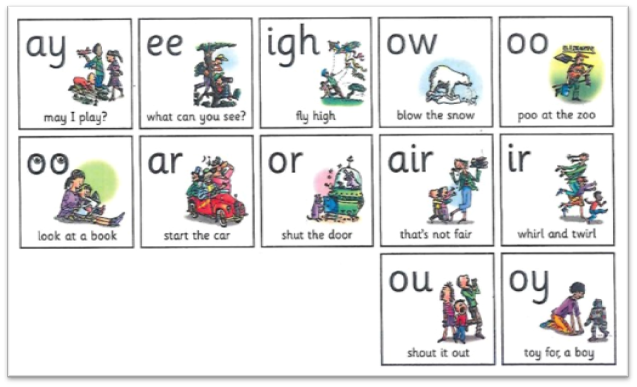
Practice along with the video and then use the Set 2 Speed Sounds slideshow or the sound cards sent home before the closure to practise reading them speedily. You can also practise reading green words with the sounds you’ve learned on the Speedy Green Word slideshow.
Set 3 Sounds
Once your child is confident in all set 1 and 2 sounds, and is confidently using all these sounds to read words, they will be taught Set 3 Sounds. If your child is learning set 3 phonics, they can practise their Set 2 and 3 sounds here. It is really important that children continue to practise their Set 2 sounds alongside learning their Set 3 sounds.
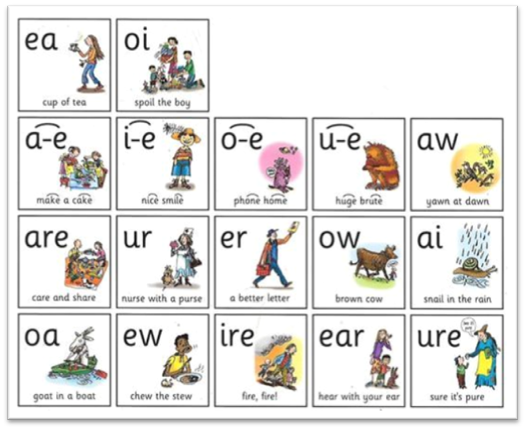
Practice along with the video and then use the Set 3 Speed Sounds slideshow or the sound cards sent home before the closure to practise reading them speedily. You can also practise reading green words with the sounds you’ve learned on the Speedy Green Word slideshow.
Learning to Read Red Words
There are lots of red words we have to learn in order to read. These are words we can’t use our sounds to blend and read – remember you can't Fred a red!
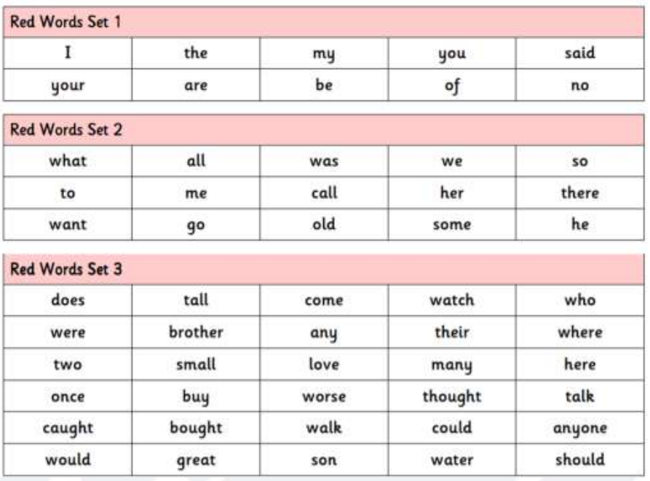
If you want to practice these red words at home, you could write them 3 times in a row, like this:
| Look and say | Look, say, cover, write | Look, say, cover, write | Look, say, cover, write |
| I | I | I | I |
| Of | Of | Of | Of |
| My | My | My | My |
Online Games and Activities
Oxford Owl - free eBooks
Why not head to Oxford Owl to read a free eBook. You will need to create a free account to start, then you can find suitable books using the link below or searching under ‘Levels’ for ‘Read Write Inc Levels’ and choosing a colour from below.
Not sure which books your child should be reading - start with Sounds Blending and work your way down. Your child should be able to confidently sound out and blend each word. You should read each book at least 3 times, as they would at school: once to read the words correctly, a second time with more fluency, and a third time in a ‘storyteller voice’ that shows their understanding.
Phonics Play
There are some free games and activities to support practicing your Phonics Skills, including recognising those tricky red words on the Phonics Play website.
Tips for Reading at Home
- Choose a quiet time – set time aside with no distractions for 10-15 minutes each day.
Be positive – boost your child’s achievement and give praise. Using books that may seem easy builds confidence rather than a book which has too many unknown words; building self-esteem is important when creating fluent and confident readers. - Read for variety – children need to experience putting their skills into practice so let them read the weekly shopping list, ingredients for a recipe, the football scores or comics. If it has words, your child can practice reading it!
- Use the Parent guide to Read Write Inc. Phonics | Oxford Owl , where you will discover more top tips to support your child at home, including parent tutorial videos, the ‘Sound Pronunciation Guide’ and more ideas and resources to support your child.
- Remember to be a good role model by reading for pleasure yourself.
- Visit your local library to borrow exciting new books, comics and other reading materials- you can find your nearest library at this Local library services government website, just by entering your postcode.
